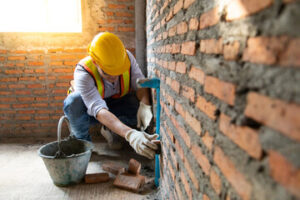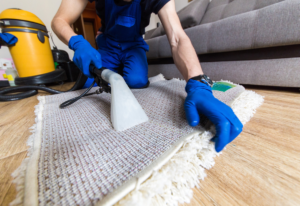Masonry Charleston SC is the construction of brick, stone or concrete blocks. It is a versatile and durable material that can be used to create both functional and attractive structures.

Masonry is a durable construction method that has been used to build buildings for centuries. It can be used to construct everything from homes to schools and office buildings. Masonry can be constructed using a variety of materials including bricks, stones, concrete blocks, and cement mortar. The materials used can vary depending on the type of building and the desired aesthetic.
In modern times, the focus has been on environmentally sustainable construction. This has influenced the use of masonry for new buildings. Masonry construction has many benefits for the environment, as it uses locally sourced building materials and minimizes waste through efficient construction techniques. This approach has also resulted in lower energy costs and a reduced carbon footprint.
Compared to steel-framed buildings, structures built with masonry are more energy efficient. This is because brick and stone walls provide better insulation. They can help reduce heating and cooling costs in the winter and summer. Masonry is also more fire resistant than other types of construction. This makes it a good choice for high-rise buildings.
A key advantage of masonry is its ability to withstand natural elements and pests. This ensures that the structure will be safe and secure for years to come. Masonry is also highly versatile, with the option to add decorative features for a more elegant look. This versatility has allowed for the construction of a wide range of styles and designs, from traditional to modern.
Many people choose to build with masonry because it is very affordable. It is also easy to install and maintain. You can find many companies that offer masonry services. However, it is important to choose a reputable company. This will ensure that you get the best results. The company should have a lot of experience and know what they are doing. It is also important to ask the company if they have any previous clients.
The ancient Roman architect and engineer Vitruvius coined the phrase “FIRMITAS, UTILITIA, Venustas” (“Strength, Utility, Beauty”). These attributes are still guiding principles for masonry today. Masonry is an ideal construction material because it combines strength and beauty with environmental sustainability.
Monuments
Masonry has long been a popular construction material for both buildings and monumental structures. Its strength and durability make it ideal for construction projects in areas prone to natural disasters, like hurricanes or earthquakes. It also offers great acoustic and thermal insulation, making it an excellent choice for interior spaces. It is also a great option for modern architecture, thanks to its flexibility and versatility. For instance, concrete block masonry has been used to create innovative, geometric forms and structures in designs by architects such as Frank Lloyd Wright and Louis Kahn.
The ancient Egyptians pioneered masonry construction, creating iconic structures such as the pyramids. The builders of these structures used large, precisely cut blocks that were carefully fitted together without the use of mortar. This technique allowed them to achieve massive structures with immense structural integrity and unparalleled beauty.
In the medieval period, masonry construction continued to evolve, reaching new heights of sophistication and artistry. This era was marked by the rise of castles and cathedrals, with many of these landmarks using masonry to achieve unprecedented structural heights and aesthetic designs. The Notre Dame Cathedral in Paris, for example, was constructed during this era and is known for its pointed arches, ribbed vaults, and flying buttresses that push the limits of masonry engineering.
With the advent of the Roman Empire, masonry construction again reached new heights. The Romans used revolutionary building materials like concrete, which allowed them to construct incredibly durable and aesthetically pleasing structures such as the Pantheon. The building features a giant dome that is one of the largest unsupported in the world and serves as an impressive monument to the power and innovation of the Romans.
Masonry continues to be an important part of building and constructing today, and this time-honored tradition will likely continue for decades to come. As technology advances, however, there is a movement to replace traditional masonry with new materials that are more sustainable and energy-efficient. While these new materials may reduce the initial environmental impact, they often have a higher lifecycle cost and can require more maintenance than masonry.
Bridges
Masonry is an incredibly durable material, so it’s ideal for bridge construction. It’s also energy-efficient and has a timeless aesthetic that can enhance any architectural design. Plus, masonry materials are easy to maintain and can withstand harsh weather conditions.
Masonry can be constructed with a wide range of materials. Bricks made from fired clay or shale are a common choice for residential and commercial construction. These are typically reinforced with concrete for additional strength and durability. They are also available in a variety of colors, textures, and finishes to suit any design. Additionally, brick and stone provide natural insulation to help regulate indoor temperatures and reduce energy costs.
For bridges, masonry structures are typically built with steel reinforcements and a concrete or asphalt base. The concrete or asphalt is then covered with a layer of rock, gravel, or crushed stone to ensure stability. Masonry can also be used for retaining walls, foundations, and other structural applications. In addition, it offers a more attractive alternative to concrete block and precast structures.
A masonry arch can be found in many different types of buildings, including churches and government buildings. These types of structures require a high level of precision and accuracy to build. Masonry arch bridges are built using a series of curved stones that form an arc. They are then connected by a beam or deck to provide support and structure for the bridge.
The key to masonry arch construction is the mortar. The mortar should be able to elastically deform to regulate stresses in the masonry units. It should also bind the units together to create an intimate seal against scouring water flow. This is why it is important to use a high-quality mortar, such as one produced with pozzolanic additives.
Bridges have a unique set of challenges. They must be able to accommodate large loads while also remaining functional and safe to use. The construction process for bridges must be carefully planned to ensure that the finished product is strong and reliable. This is why it’s essential to hire a reputable masonry company for the job.
Homes
Masonry construction is an attractive option for homes because it’s durable, low-maintenance, and energy-efficient. It also adds value to the home and increases its longevity. Masonry buildings are also fire-resistant and comply with building safety regulations, making them an ideal choice for areas prone to natural disasters or that require rigorous structural integrity standards.
Brick, concrete block, and stone are long-lasting materials that don’t crack or decay. They’re also easy to clean and naturally resistant to rot, insects, and pests. This makes them an environmentally-friendly choice for building, minimizing the need for toxic chemicals and providing a safe environment for families to live in.
Aside from its practical benefits, masonry offers aesthetic appeal as well. Its rugged beauty and timeless design have made it a staple of the architecture industry for centuries, including its use in many iconic landmarks around the world such as Notre Dame Cathedral’s stone walls, vaulted ceilings, and flying buttresses, as well as Frank Lloyd Wright’s Fallingwater house’s sandstone walls that blend with the surrounding nature.
While masonry is a time-tested construction method, emerging trends are shaping its future in the construction industry. For example, the demand for sustainable materials is pushing the industry to adopt innovative technologies such as self-healing concrete and eco-friendly bricks. Integrated digital tools like Building Information Modelling (BIM) are streamlining the entire process, helping construction teams maximize project outcomes and align with modern sustainability standards.
Despite its impressive benefits, masonry construction has some drawbacks such as its weight and cost. However, these challenges can be overcome by using the latest technology, materials, and techniques to optimize the construction process. In addition, a good mason will ensure that all the steps in the construction process are executed correctly and efficiently to prevent costly delays and reworks down the line.

